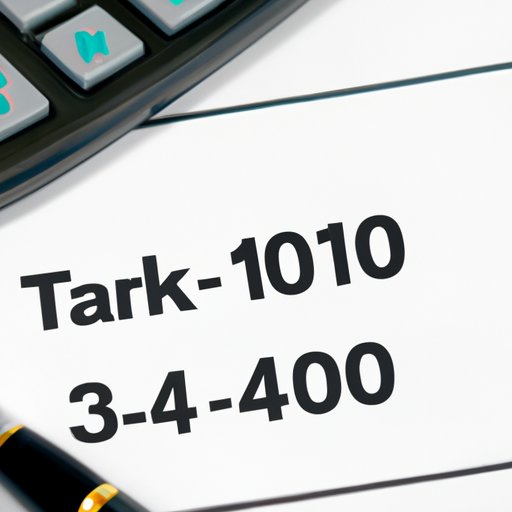
Introduction
In planning for retirement, a 401k is an essential tool for building financial security. It is a retirement savings account that allows you to invest a portion of your paycheck before taxes are taken out. With a 401k account, you get to save money for your future and reduce your taxable income at the same time. One of the benefits of a 401k is the flexibility it offers for withdrawals. However, it is essential to understand the rules and regulations before making any withdrawals. In this article, we will explore everything you need to know about 401k withdrawals.
An Overview of 401k Withdrawals: Rules and Regulations to Know
401k withdrawals can be categorized into three types: normal, early, and hardship. Normal withdrawals can be made when you turn 59 ½, and you can withdraw as much or as little as you want. Early withdrawals, on the other hand, are those made before the age of 59 ½. Lastly, hardship withdrawals are made when a participant experiences severe financial challenges that make it impossible to meet essential financial obligations.
To make withdrawals from your 401k, you need to understand the rules and regulations that come with them. For a normal withdrawal, you need to pay taxes on the amount withdrawn as it will be counted as ordinary income. Early withdrawals, before the age of 59 ½, are typically subject to a 10% penalty on top of the income tax. Hardship withdrawals are also subject to income tax and the 10% penalty. However, you may be able to withdraw funds without the 10% penalty if you meet criteria for hardship withdrawals.
When Is It OK to Take Money Out of Your 401k? A Guide to Hardship Withdrawals
A hardship withdrawal is a type of withdrawal that you can make from your 401k account under certain circumstances. This kind of withdrawal can provide relief for those undergoing financial difficulties such as unexpected funeral expenses, home repair expenses, medical expenses, or sudden job loss.
There are specific criteria you must meet to be eligible for a hardship withdrawal. For instance, you may show proof of the hardship and have no other financial resources to meet the need. Hardship withdrawals are subject to income tax, but the 10% penalty may be waived. While this can be a good solution for a temporary financial setback, taking a hardship withdrawal affects your long-term retirement savings goals and can result in a smaller nest egg at retirement.
The Dangers of Early 401k Withdrawals: What You Need to Know
Withdrawing funds from a 401k account before retirement can be tempting, especially when facing a financial crisis. However, early withdrawals before the age of 59 ½ come with a 10% penalty and can reduce your retirement savings balance dramatically. With early withdrawals, you can lose out on compounding interest, and it leaves you vulnerable to having less money in retirement.
In some cases, early withdrawals are necessary, such as when experiencing a genuine financial emergency or needing funds to avert foreclosure or eviction. Otherwise, drawing from your retirement account early can have unintended consequences.
How to Make 401k Withdrawals Without Penalty: A Beginner’s Guide
401k distributions can be withdrawn without penalty when conditions for qualified distributions are met. For example, if you reach the age of 59 ½, the 10% penalty no longer applies to withdrawals. Additionally, you may withdraw funds without penalty for specific job changes or after becoming disabled. You may also access the balance of the account through loans, which generally have more favorable terms than hardship withdrawals.
If you are changing employers or retiring, you may rollover your 401k balance into an IRA or another employer-sponsored plan, avoiding taxes or penalties, and maintaining your tax-deferred benefits. It’s vital to understand the rules and regulations surrounding rollovers, since failure to complete them properly may trigger penalties or taxes.
Strategic 401k Withdrawals: Maximizing Your Retirement Savings While Minimizing Penalties
Roth IRA conversions can be a strategic tool in managing taxes during retirement. They allow you to move funds from a traditional IRA or 401k account to a Roth IRA. Withdrawals from a Roth account are tax-free, allowing you to minimize your overall tax bill during retirement. Planning and timing your retirement withdrawals, including the type of account balance you draw down initially, can be critical and can make a significant difference in how much you pay in taxes and how much you will have for retirement.
Conclusion
401k savings are a crucial part of many Americans’ retirement planning, and caution must be taken when making withdrawals. Understanding when withdrawals are permitted and following the rules and regulations surrounding them is vital for maintaining your nest egg. While hardships can occur that require immediate intervention, it’s essential to remember that early withdrawals significantly impact the long-term growth of your retirement savings account. Consider your options carefully and plan accordingly for your golden years.




